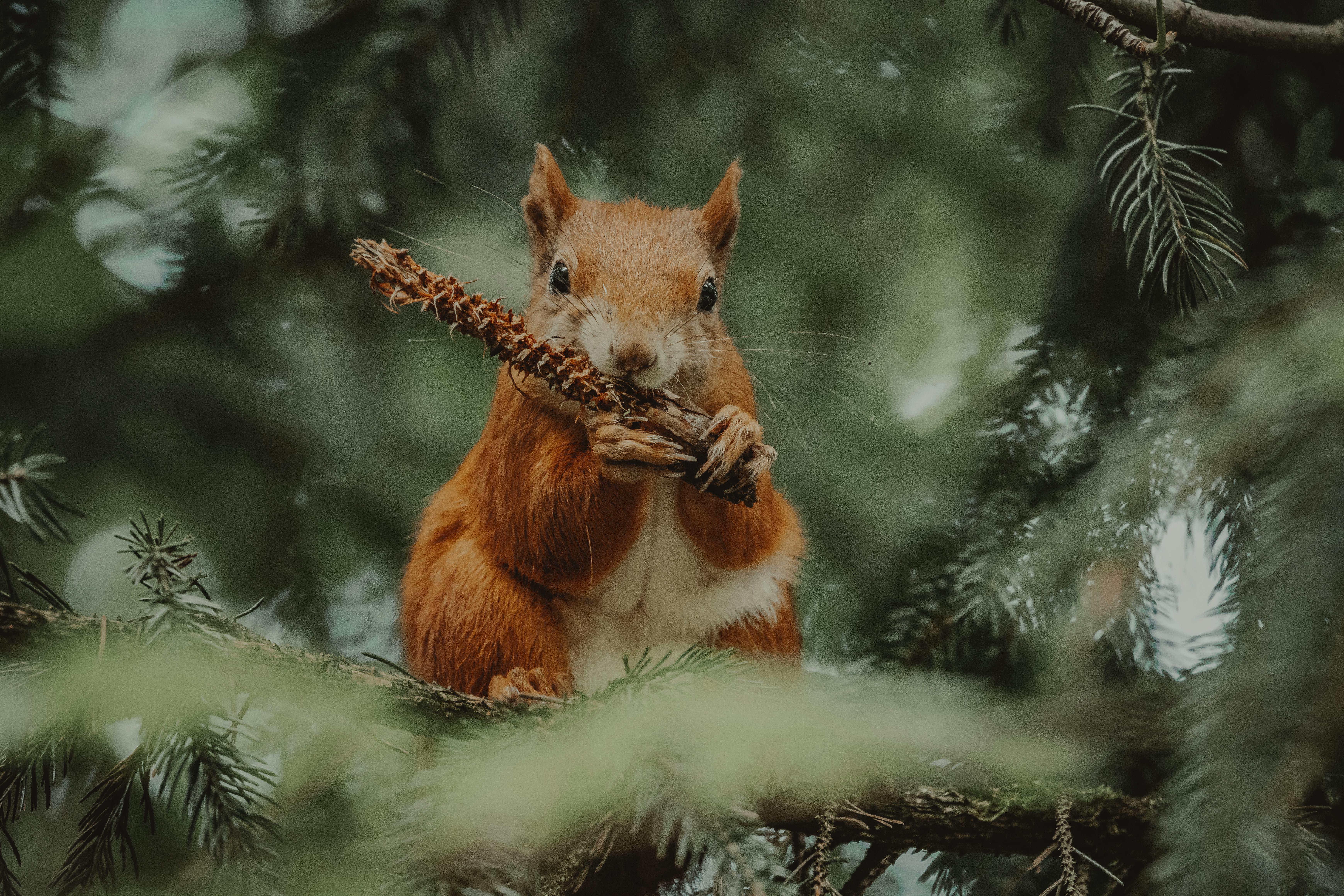Wild strawberries are a delicious and nutritious treat that can be found in many places around the world. They are small, sweet, and often tart fruits that can be eaten raw or used in recipes. Not only do wild strawberries taste great, but they also offer a range of health benefits due to their high levels of antioxidants, vitamins, and minerals. In this article, we’ll discuss the nutritional value of wild strawberries and why you should consider adding them to your diet. We’ll also provide some tips on how to identify them and how to harvest them safely.Yes, it is generally safe to eat wild strawberries. However, you should be aware of the risk of consuming contaminated berries from polluted water sources or areas treated with pesticides. It is important to carefully inspect and wash the wild strawberries before eating them to reduce possible exposure to harmful bacteria or chemicals.
Where Can You Find Wild Strawberries?
Wild strawberries can be found in many parts of the world, including North America, Europe, and Asia. They usually grow in areas with plenty of sunlight and moist soil, such as meadows, woodland edges, and fields. In the United States, wild strawberries can be found in states like California, Maine, New York, Oregon, and Washington.
These small red fruits are easy to spot due to their size and color. If you’re not sure what a wild strawberry looks like, it’s similar to a cultivated strawberry but smaller and paler in color. It also has a sweeter taste than cultivated varieties.
To find wild strawberries, look for patches of bright green leaves that have three or five lobes at the end of each leaf stem. The flowers will be white or creamy white with yellow centers. Once mature fruits form they will be small (about the size of a dime) and bright red.
If you want to pick wild strawberries for your own use you should make sure they are safe to eat first by checking for any signs of disease or insect damage. Wear gloves when harvesting as wild strawberries have very delicate skin that can easily become bruised if handled too roughly. Once you’re finished picking them rinse the berries under cold water before eating them or preserving them for later use.
What Are the Benefits of Eating Wild Strawberries?
Wild strawberries are a great snack that provide a variety of health benefits. They are packed with antioxidants and vitamins that can help reduce inflammation, boost immunity, and provide other health benefits. Wild strawberries are also an excellent source of dietary fiber, which helps you stay full longer and aids in digestion. Furthermore, they contain many essential minerals such as magnesium, potassium, and iron. Eating wild strawberries can also help improve your mental health by reducing stress and anxiety, improving focus, and enhancing overall cognitive function. Additionally, they contain powerful compounds that may help protect against certain cancers and other diseases. In short, wild strawberries are a nutritious snack that can provide numerous health benefits for your body and mind.
Identifying Wild Strawberries
Wild strawberries are a delicious and nutritious treat, and can be found in many areas. They are relatively easy to identify, but it is important to know what to look for. The best way to identify wild strawberries is by their distinctive shape, leaf pattern, and flower.
The first thing to look for when identifying wild strawberries is the shape. Wild strawberries are typically much smaller than cultivated varieties and have an elongated or heart-shaped form. They also have a distinctive white or yellow “cap” at the tip of the fruit where the stem attaches.
The leaves of a wild strawberry plant are another good identifier. The leaves are usually dark green in color with saw-toothed edges, although some varieties may have lighter green or even yellowish coloring. The leaves will also have three distinct lobes that are connected at the base of the leaf stem.
The flowers of a wild strawberry plant can also help in identification. The flowers will typically be small and white with five petals arranged in a star formation around a central core. The flowers will usually appear in clusters along the stems of the plant and will bloom from late spring through early summer.
Finally, it’s important to note that wild strawberries can vary greatly depending on the variety and growing conditions. While all varieties share some common characteristics, there can be slight variations in size, color, and shape between different types of wild strawberries. It’s always best to collect several samples before making an identification so you can compare them side by side for accuracy.
In summary, wild strawberries can be identified by their distinctive shape, leaf pattern, and flower. Be sure to take into consideration any variations between different types of plants before making an identification so you can make sure you get the most accurate result possible!
How to Prepare Wild Strawberries for Eating?
Wild strawberries are a delicious and nutritious treat that can be enjoyed in a variety of ways. If you’re lucky enough to find some in the wild, you’ll need to prepare them properly for the best flavor and texture. Here’s how to prepare wild strawberries for eating.
The first step in preparing wild strawberries for eating is to clean them. Gently rinse the berries with cool water and remove any stems or leaves. Then, pick out any bad or moldy berries as these can affect the flavor of the rest of the bunch.
Once your wild strawberries are clean, you can either eat them raw or cook them. For raw berries, you may want to sprinkle them with a bit of sugar or honey if desired. If you’re cooking your wild strawberries, they work well in jams, pies, cobblers, and other baked goods.
No matter how you plan on eating your wild strawberries, it’s important to store them properly. Place the unwashed berries on a paper towel-lined plate or tray and refrigerate until ready to use. This will help keep them from spoiling quickly and ensure they keep their flavor and texture when eaten.
Wild strawberries make a great addition to any meal or snack time treat! With just a few minutes of preparation time, these sweet little fruits are ready to be enjoyed in all sorts of delicious ways!

Storing Wild Strawberries
Wild strawberries are an incredibly delicious fruit that can be found in the wild. However, they can be difficult to store properly, as their delicate nature makes them susceptible to spoilage. To ensure that your wild strawberries stay fresh and delicious, it is important to store them correctly. Here are some tips for storing wild strawberries:
First, it is important to pick the berries only when they are ripe. Unripe berries will not last as long and may not taste as good as ripe ones. Once you have picked the ripe berries, place them in a shallow container with a lid or wrap them in a damp cloth or paper towel. This will help keep the moisture in and prevent them from drying out.
Next, put the container of wild strawberries in the refrigerator. The cold temperature will help preserve their flavor and freshness for several days. If you want to keep them longer, you can freeze them by placing them on a baking sheet and putting it in the freezer for several hours before transferring them into an airtight container or freezer bag.
Finally, when you are ready to eat your wild strawberries, make sure to take them out of the refrigerator or freezer and let them come back up to room temperature before eating. This will maximize their flavor and texture. Enjoy!
Possible Side Effects of Eating Wild Strawberries
Wild strawberries are a delicious and nutritious treat, but like all foods, there can be potential side effects. Eating wild strawberries in moderation can help to reduce the chances of experiencing any negative effects. Some of the possible side effects include indigestion, allergic reactions, and increased risk of kidney stones.
Indigestion is a common side effect of eating wild strawberries. Eating too many wild strawberries can cause the stomach to become upset and bloated, resulting in indigestion. If you experience indigestion after eating wild strawberries, try to reduce the amount you eat.
Allergic reactions are another potential side effect of eating wild strawberries. People who are allergic to other fruits may also be allergic to wild strawberries and should avoid eating them. Symptoms of an allergic reaction include hives, itching, swelling of the mouth or throat, and difficulty breathing. If you experience any of these symptoms after eating wild strawberries, seek medical attention immediately.
Finally, eating too many wild strawberries can increase your risk for developing kidney stones. Wild strawberries contain oxalates which can lead to an accumulation of calcium in your kidneys and form small stones. To reduce your risk for developing kidney stones from eating wild strawberries, be sure to drink plenty of water throughout the day and limit your intake of oxalate-rich foods like spinach and rhubarb as well.
In conclusion, while wild strawberries are a healthy treat that can provide numerous health benefits, it is important to remember that they can also have some possible side effects if not eaten in moderation or if someone has an allergy or a pre-existing condition such as kidney stones. Be sure to consult with your healthcare provider before adding large amounts of wild strawberries into your diet if you have any concerns about their safety or potential side effects.
Wild Strawberry Recipes
Wild strawberries are a delicious and nutritious treat that can be enjoyed in a variety of dishes. Whether you prefer sweet or savory recipes, you can find something to satisfy your taste buds with these wild strawberry recipes. From breakfast dishes to desserts, these recipes will make use of the unique flavor of wild strawberries and are sure to please even the pickiest eaters.
Wild Strawberry Smoothie
Start your morning off right with a wild strawberry smoothie. Simply blend together 1 cup of fresh or frozen wild strawberries, 1/2 cup of low-fat yogurt, 1/2 cup of orange juice, and 1 tablespoon of honey. Enjoy your smoothie chilled or over ice for a refreshing pick-me-up.
Wild Strawberry Scones
For an indulgent breakfast treat, try making wild strawberry scones. In a large bowl, mix together 2 cups of all-purpose flour, 2 teaspoons baking powder, 1/4 teaspoon baking soda, and 3 tablespoons sugar. Cut in 6 tablespoons cold butter until the mixture resembles coarse meal. Add in 1/2 cup diced fresh or frozen wild strawberries and stir to combine. Slowly add 2/3 cup buttermilk while stirring with a fork until the dough starts to form into a ball. Gently pat the dough onto an ungreased cookie sheet and cut into 8 wedges. Bake at 425 degrees Fahrenheit for 15 minutes or until golden brown and enjoy warm or cooled with butter or jam!
Wild Strawberry Salad
For a light lunch dish, try making a wild strawberry salad. Start by washing and drying 2 cups baby spinach leaves then tossing them in a large salad bowl with sliced red onion, crumbled feta cheese, and chopped walnuts (or other nut of your choice). In a separate bowl mix together 3 tablespoons olive oil, 2 tablespoons balsamic vinegar (or other vinegar of your choice), 1 tablespoon honey, salt & pepper to taste then whisk together until combined. Drizzle dressing over the salad leaves then top with 1 cup fresh or frozen wild strawberries before serving!
Wild Strawberry Jam
Make use of those delicious wild strawberries by turning them into jam! Start by washing 4 cups fresh or frozen wild strawberries then mashing them in a medium saucepan on medium heat until they are soft enough to mash easily with a spoon (about 5 minutes). Add in 3 cups sugar then stir continuously for about 10 minutes until the mixture begins to thicken slightly. Remove from heat and let cool completely before transferring into airtight jars for storage in the refrigerator up to two weeks (or freeze for up to 6 months). Enjoy your homemade jam on toast or as an addition to cakes and pies!

Conclusion
Wild strawberries are a safe and delicious addition to any diet. They are also a great source of nutrition, containing vitamins C and K, fiber, and antioxidants. Eating wild strawberries can provide numerous health benefits, including improved heart health, protection against certain types of cancer, and improved digestive health. Wild strawberries are an excellent way to get your daily dose of vitamins and minerals in a natural way.
Wild strawberry picking is a great outdoor activity for individuals or families of all ages. It can be a fun way to explore nature while enjoying the sweet taste of wild strawberries. When picking wild strawberries, be sure to follow the guidelines laid out by the local authorities to ensure you don’t damage any plants or harm yourself or other people in the process.
In conclusion, eating wild strawberries is both safe and nutritious. They are an excellent source of vitamins and minerals that can provide numerous health benefits when enjoyed as part of a balanced diet. Wild strawberry picking is also a great outdoor activity for those looking to explore nature and enjoy some delicious snacks at the same time!



